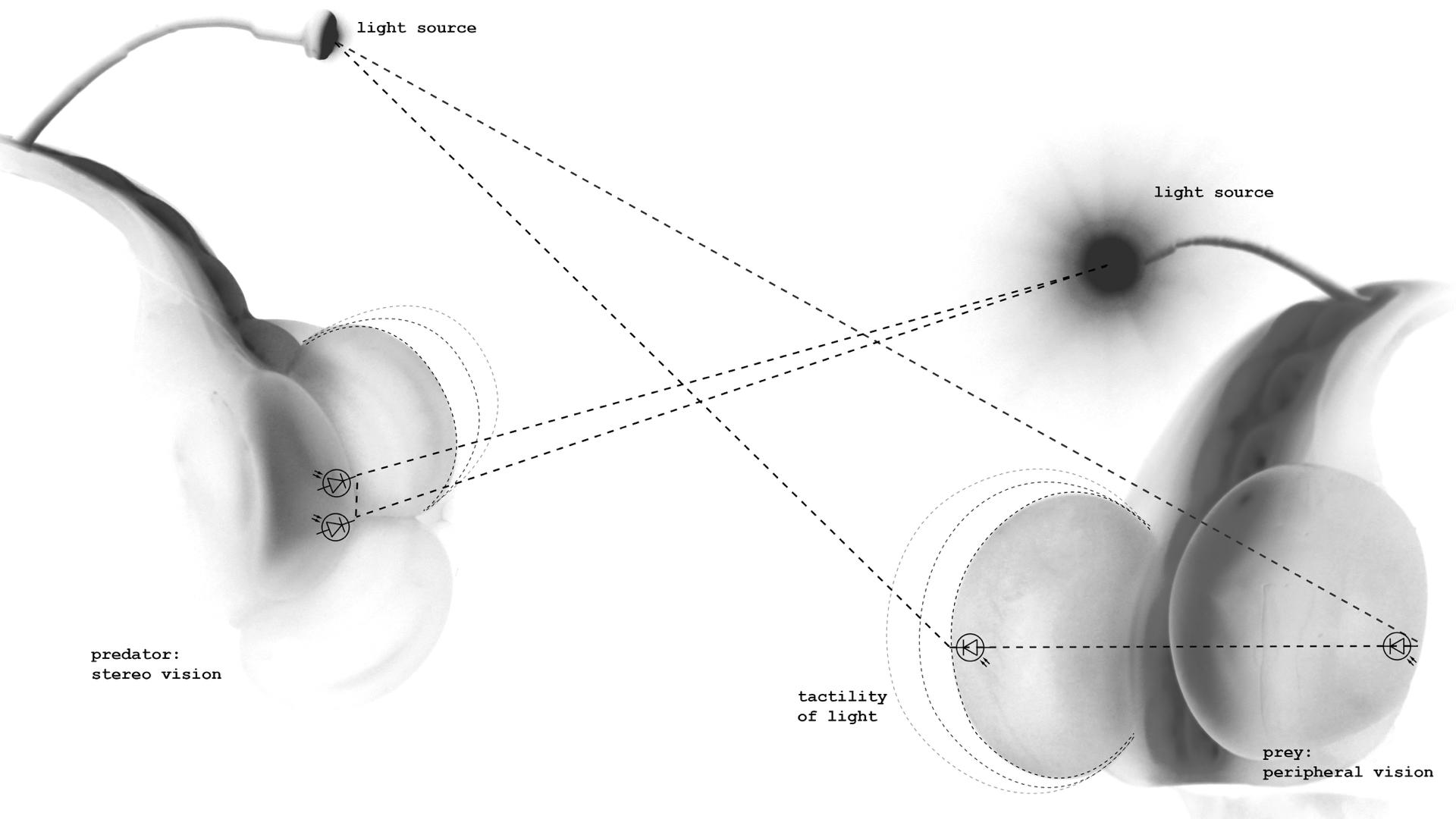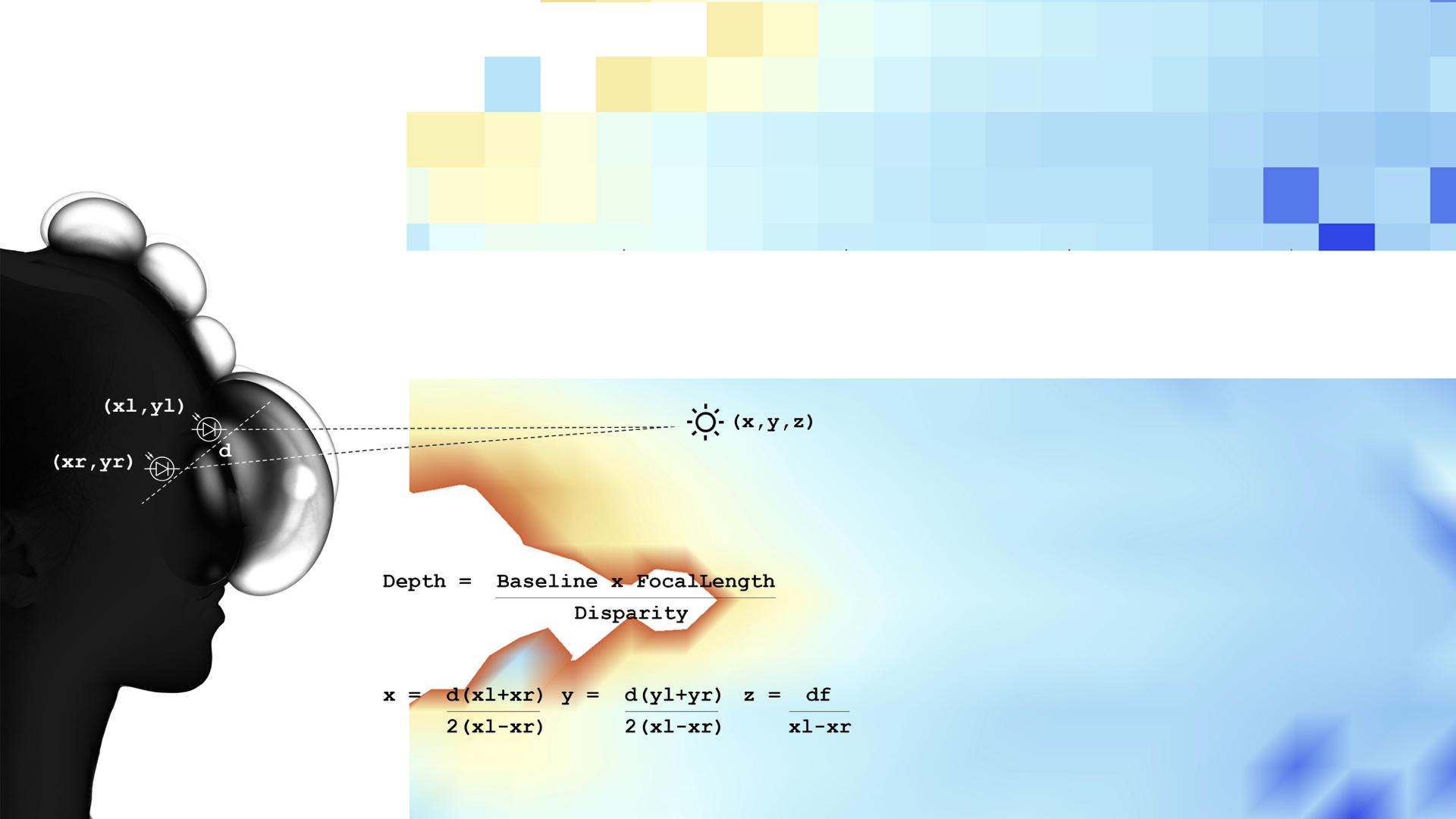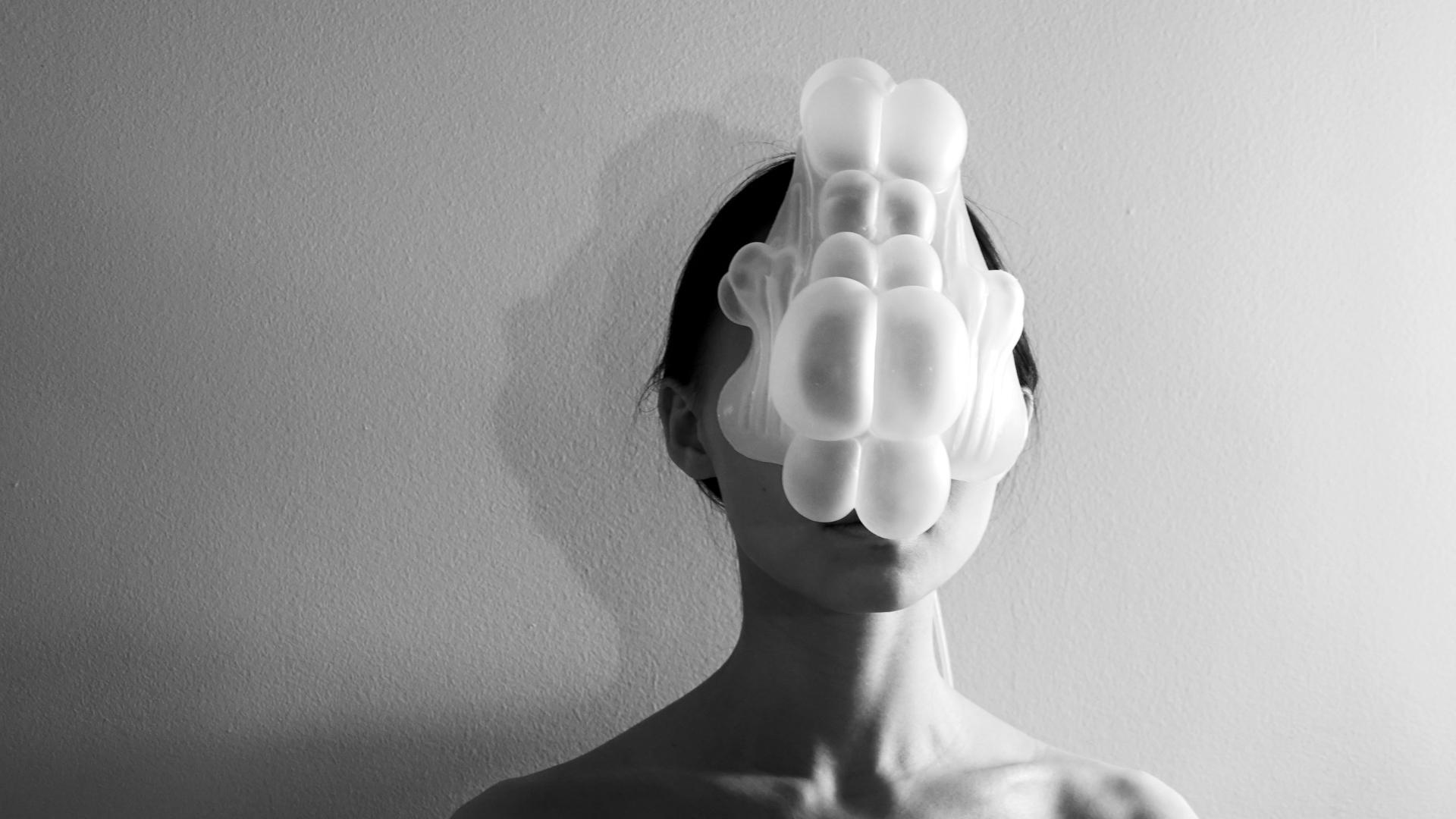Design


On each side of the eye locates a photodiode to sense the light, and a pneumatic system made with elastomer to react according to the sensor. The mask breathes gently when the light is far away and rapidly as the light gets closer. Like the two eyes we possess, the distance in between the two sensors forms a stereovision, hence the location and depth of the upcoming light can be distinguished.

Geometry

The bottom layer of the casted silicone is 1/8 inch thick, and the top layer is 1/16 inch thick. When inflated, this difference in thickness causes the chambers to bulge out and bend. The geometry is designed to be symmetric, with two sets of chambers on each side. One set of chambers is arranged vertically and the other set is arranged horizontally, so that they embrace the shape of the face completely to create a strong tactile feeling when inflated.



Another design is for the preys. It stretches horizontally and bends inward to embrace the eyes.


The laser cut files can be downloaded below.
| inner.pdf | 53 KB | |
| outer.pdf | 41 KB |
Early Version: Optical Fiber
In the early version of the prototypes, I embedded optical fiber inside the elastomer. The optical fibers expand when inflated, and compress when deflated, like a creature with tentacles.


In another version, I combined rigid structure together with soft silicon to support the form. Nature inspired, the "bones" are grown with Diffusion-Limited Aggregation algorithm in Houdini, and then 3D printed with Ultimaker.

The optical fibers respond to the intensity of light sensed. When the light is far away, they breath peacefully. As the light get closer, they breath rapidly and nervously.
An intimate interaction between the two creatures.
After many experiments, I felt the “bones”, the optical fibers, and the silicon bubbles speak very distinct design languages, and they are too strong individually to put them together. So I chose not to include them in the final design.